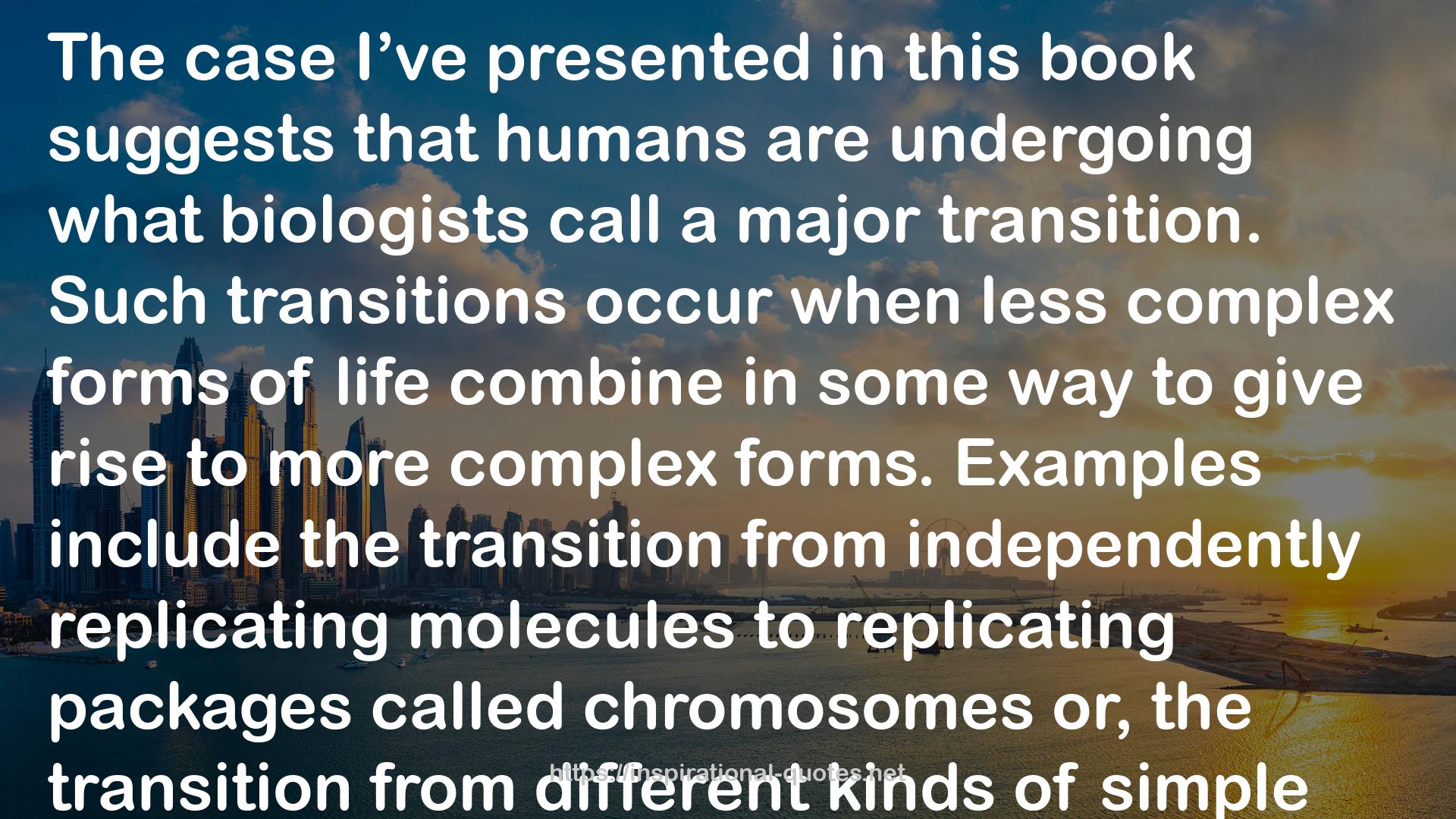" The case I’ve presented in this book suggests that humans are undergoing what biologists call a major transition. Such transitions occur when less complex forms of life combine in some way to give rise to more complex forms. Examples include the transition from independently replicating molecules to replicating packages called chromosomes or, the transition from different kinds of simple cells to more complex cells in which these once-distinct simple cell types came to perform critical functions and become entirely mutually interdependent, such as the nucleus and mitochondria in our own cells. Our species’ dependence on cumulative culture for survival, on living in cooperative groups, on alloparenting and a division of labor and information, and on our communicative repertoires mean that humans have begun to satisfy all the requirements for a major biological transition. Thus, we are literally the beginnings of a new kind of animal.1 By contrast, the wrong way to understand humans is to think that we are just a really smart, though somewhat less hairy, chimpanzee. This view is surprisingly common. Understanding how this major transition is occurring alters how we think about the origins of our species, about the reasons for our immense ecological success, and about the uniqueness of our place in nature. The insights generated alter our understandings of intelligence, faith, innovation, intergroup competition, cooperation, institutions, rituals, and the psychological differences between populations. Recognizing that we are a cultural species means that, even in the short run (when genes don’t have enough time to change), institutions, technologies, and languages are coevolving with psychological biases, cognitive abilities, emotional responses, and preferences. In the longer run, genes are evolving to adapt to these culturally constructed worlds, and this has been, and is now, the primary driver of human genetic evolution. Figure 17.1. "
― Joseph Henrich , The Secret of Our Success: How Culture Is Driving Human Evolution, Domesticating Our Species, and Making Us Smarter
